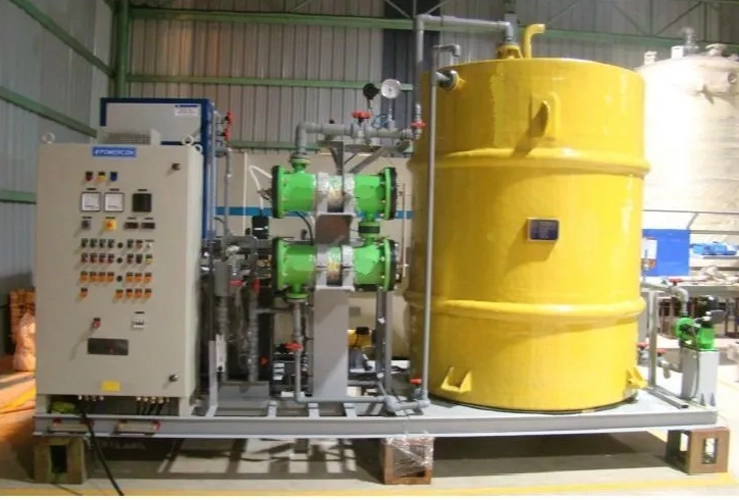Electro-Chlorinator
An electro-chlorinator, also known as an electrolytic chlorinator or electrolytic disinfection system, is a device used in water treatment to generate chlorine on-site by electrolysis. It is commonly use for disinfection purposes in swimming pools, water treatment plants, and various industrial applications.
System Components
The electro-chlorinator consists of an electrolytic cell where the process of electrolysis takes place. The cell typically contains two electrodes, an anode (positive electrode) and a cathode (negative electrode), which are usually made of titanium or other corrosion-resistant materials. The electrodes are separate by a membrane or diaphragm to prevent the mixing of chlorine gas and hydrogen gas, which are produce during the electrolysis process.
Process Description
When a direct electric current is pass through the electrolytic cell, it causes a chemical reaction to occur. Chloride ions (Cl-) naturally present in the water are attracte to the anode, where they undergo oxidation. This results in the production of chlorine gas (Cl2) at the anode. The chlorine gas dissolves in the water, forming hypochlorous acid (HOCl) and hypochlorite ions (OCl-), which are effective disinfectants.
Significance & Advantages
The chlorine produced by the electro-chlorinator is used for the disinfection of water, eliminating various microorganisms such as bacteria, viruses, and algae that may be present. It provides a convenient and efficient method of chlorination without the need for handling or storing chlorine compounds, which can be hazardous.
Electro-chlorinators offer several advantages in water treatment. They provide a continuous and control supply of chlorine, allowing for accurate dosing and maintaining a consistent residual disinfectant level in the water. They also eliminate the need for transporting and storing hazardous chemicals, making them a safer and more environmentally friendly option.
Targeted Impurities
- Pathogens
- Odor





